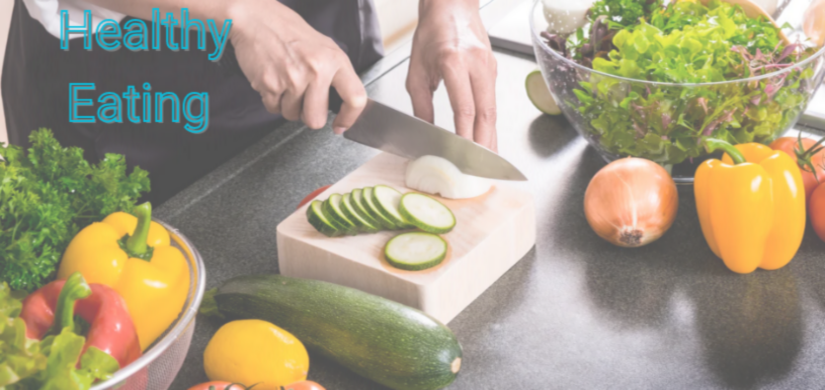One of the most significant things you can do to safeguard your health is to eat a healthy, balanced diet. In reality, lifestyle choices and behaviors like eating a nutritious diet and exercising regularly can prevent up to 80% of early heart disease and stroke.
Your risk of heart disease and stroke can be decreased by eating a balanced diet:
- decreasing your cholesterol
- decreasing blood pressure
- regulating your blood sugar while assisting you in managing your body weight.
What does a balanced, healthy diet entail?
Eating a variety of healthful meals every day is advised by Food Guide. This entails consuming more plant-based diets and avoiding items that have undergone extreme processing.
A balanced diet consists of:
1. Consuming a lot of fruit and veggies
- One of the most significant dietary practices is this. Fruit and vegetables are rich in nutrients (antioxidants, vitamins, minerals, and fiber) and help you maintain a healthy weight by making you feel satisfied for longer periods of time.
- At every meal and snack, place fruit and vegetables on half of your plate.
2. Opting for whole-grain meal options
- Brown or wild rice, quinoa, oatmeal, whole-wheat bread, crackers, and hulled barley are examples of whole-grain meals. The entire grain is used in their preparation. Because they are high in protein, fiber, and B vitamins, whole grain meals will keep you feeling fuller for longer.
- Instead of refined or processed grains like white bread and pasta, choose whole grain choices.
- A quarter of your plate should be made up of whole-grain items.
3. Eating protein-rich meals
- Legumes, nuts, seeds, tofu, fortified soy beverages, fish, shellfish, eggs, poultry, lean red meats, including wild game, low-fat milk, low-fat yogurts, low-fat kefir, and low-fat and low-sodium cheeses are examples of foods high in protein.
- Building and maintaining bones, muscles, and skin both require protein.
- Each day, consume protein.
- consume more plant-based foods and try to consume at least two servings of fish every week.
- Protein is abundant in dairy products. Opt for bland, lower-fat selections.
- Protein-rich meals should take up a quarter of your plate.
4. Reducing your intake of highly and ultra-processed meals
- Foods that have undergone extensive processing sometimes referred to as ultra-processed foods, differ significantly from their original food sources. Important elements including vitamins, minerals, and fiber are frequently lost during processing while salt and sugar are added. Fast food, hot dogs, chips, cookies, frozen pizzas, deli meats, white rice, and white bread are a few examples of processed foods.
- These are foods that have been marginally modified but include just a little amount of industrially produced additives. Almost all of the nutrients in minimally processed foods are still present. Bagged salad, frozen fruit and vegetables, eggs, milk, cheese, flour, brown rice, oil, and dry herbs are a few examples. When we suggest that you avoid processed foods, we are not referring to these minimally processed foods.
- A study supported by Heart & Stroke indicated that over half of Canadians' diets consist of highly processed foods. To learn more, click here.
5. Making water your preferred beverage
- Without adding calories to the diet, water improves hydration and supports health.
- Energy drinks, fruit drinks, 100% fruit juice, soft drinks, and flavored coffees are among the sugary beverages that have a lot of sugar but little to no nutritional value. Without realizing it, it is simple to consume empty calories, which causes weight gain.
- Avoid fruit juice, even if it is made entirely of fruit. Fruit juice provides some of the same vitamins and minerals as fruit, but it also has more sugar and less fiber. Fruit juice shouldn't be substituted for fruits in your diet. Fruits should be consumed, not drunk, by Canadians.
- If there isn't any safe drinking water available, try coffee, tea, unsweetened low-fat milk, and previously boiled water to relieve your thirst.
Top 5 tips from the experts
- Utilise whole or less processed items to prepare the majority of your meals at home. For diversity and to keep things interesting, pick various proteins. You can plan better if you give each day a memorable name. Attempt "Meatless Monday" with this vegetarian meal.
- The secret to quick and simple meal preparation is to create an eating plan for the week. See here for our purchasing advice.
- Pick meals that use a lot of fruit and veggies. At every meal, try to fill half of your plate with fruit and vegetables. Every day, select fruits and vegetables that are vibrant in color, especially orange and dark green ones (see here for more details). Fresh produce can be substituted with unsweetened fruits and vegetables that are frozen or canned. Test out this recipe.
- Drink water instead of sugary beverages. Unsweetened, lower-fat milk is another excellent source of fluids. So that you can fill up wherever you are going, keep a reusable water bottle in your handbag or vehicle.
- Eat more frequent, smaller meals. Consume snacks in between meals at least three times a day. You are more inclined to choose unhealthy foods when you wait too long to eat. Keep quick-to-eat food (like these) in your bag or purse just in case. You can advertise your health or pharmacy network with 7Search PPC.

993.png)








